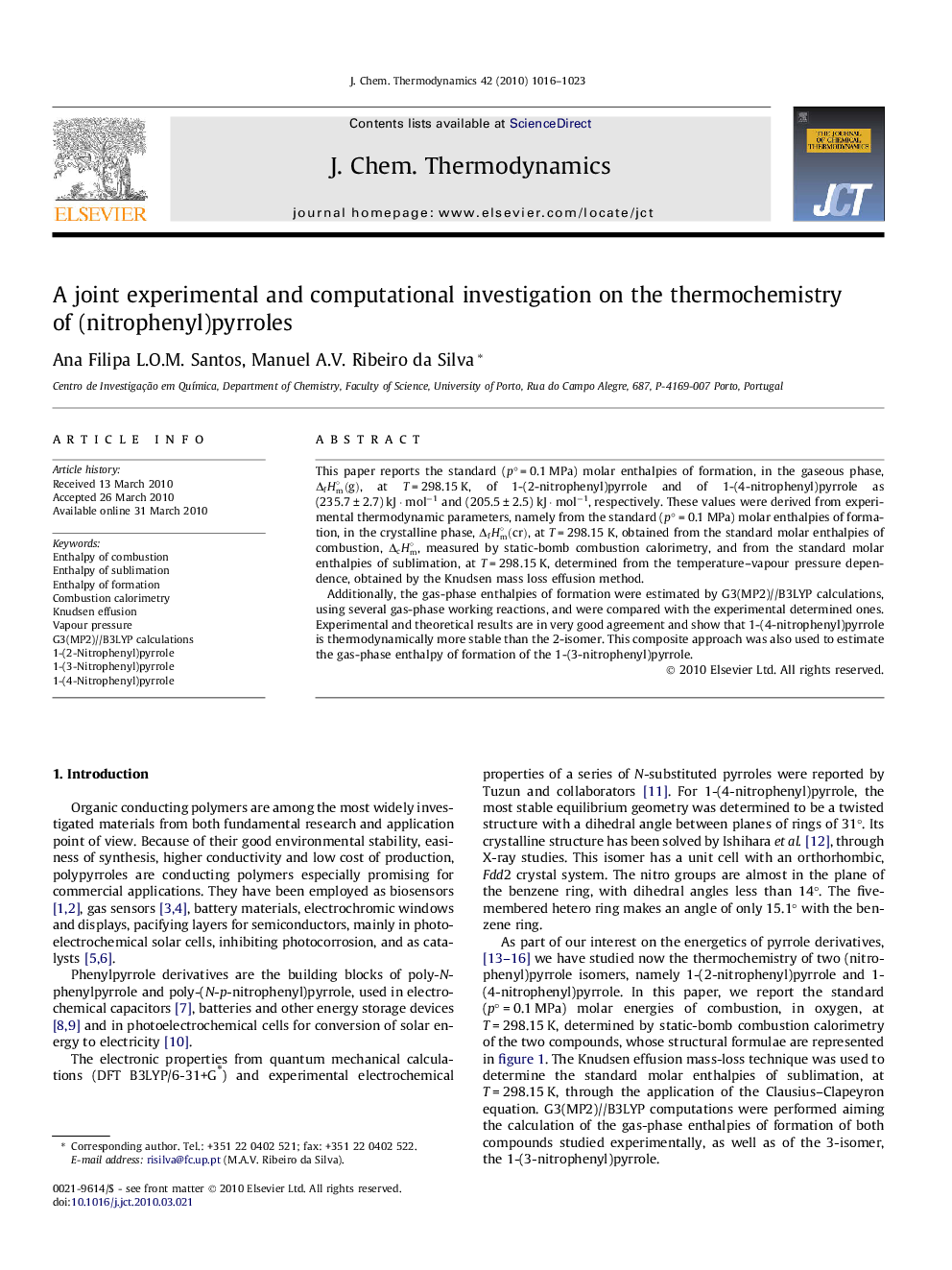| کد مقاله | کد نشریه | سال انتشار | مقاله انگلیسی | نسخه تمام متن |
|---|---|---|---|---|
| 216444 | 1426286 | 2010 | 8 صفحه PDF | دانلود رایگان |

This paper reports the standard (p° = 0.1 MPa) molar enthalpies of formation, in the gaseous phase, ΔfHm∘(g), at T = 298.15 K, of 1-(2-nitrophenyl)pyrrole and of 1-(4-nitrophenyl)pyrrole as (235.7 ± 2.7) kJ · mol−1 and (205.5 ± 2.5) kJ · mol−1, respectively. These values were derived from experimental thermodynamic parameters, namely from the standard (p° = 0.1 MPa) molar enthalpies of formation, in the crystalline phase, ΔfHm∘(cr), at T = 298.15 K, obtained from the standard molar enthalpies of combustion, ΔcHm∘, measured by static-bomb combustion calorimetry, and from the standard molar enthalpies of sublimation, at T = 298.15 K, determined from the temperature–vapour pressure dependence, obtained by the Knudsen mass loss effusion method.Additionally, the gas-phase enthalpies of formation were estimated by G3(MP2)//B3LYP calculations, using several gas-phase working reactions, and were compared with the experimental determined ones. Experimental and theoretical results are in very good agreement and show that 1-(4-nitrophenyl)pyrrole is thermodynamically more stable than the 2-isomer. This composite approach was also used to estimate the gas-phase enthalpy of formation of the 1-(3-nitrophenyl)pyrrole.
Journal: The Journal of Chemical Thermodynamics - Volume 42, Issue 8, August 2010, Pages 1016–1023